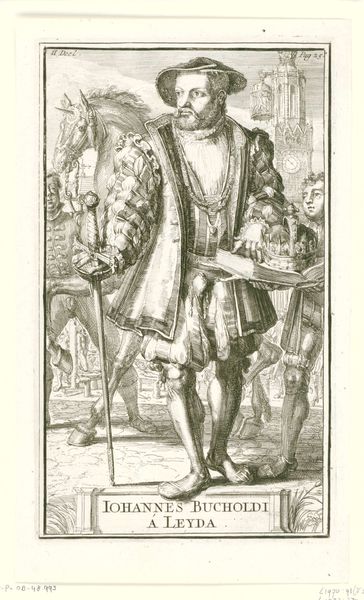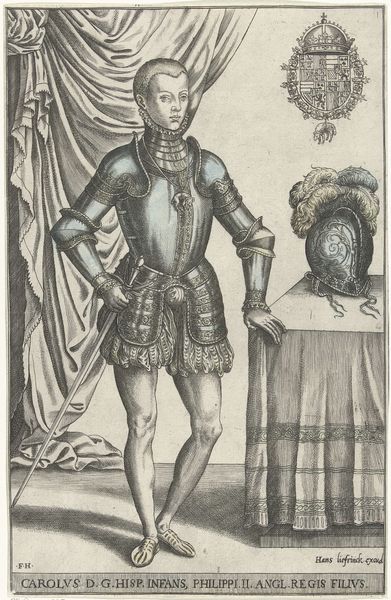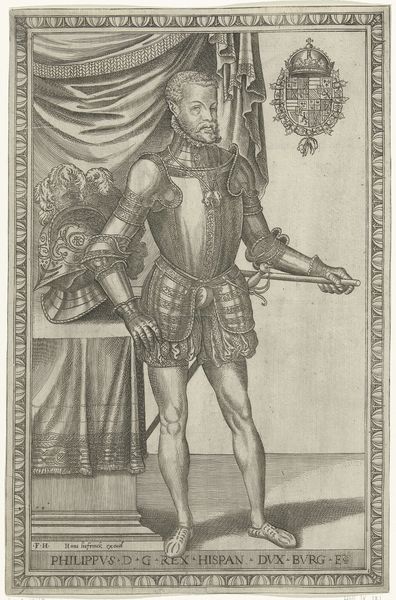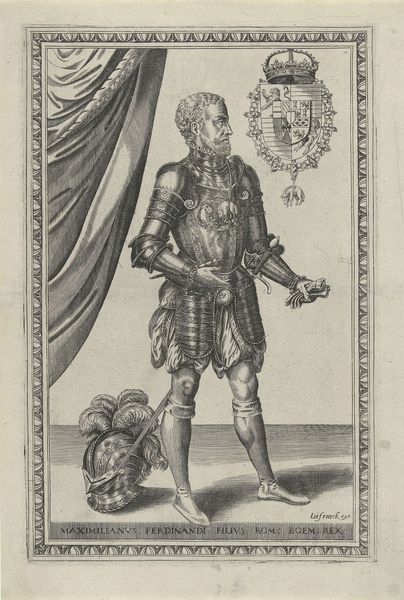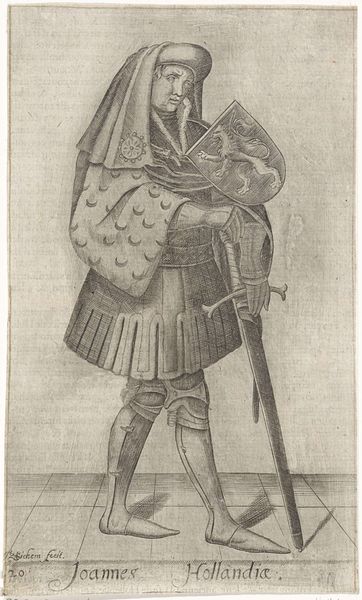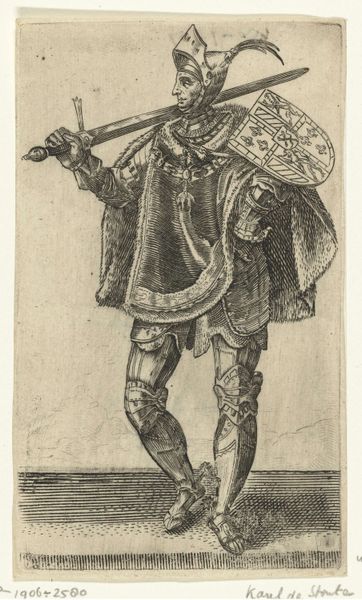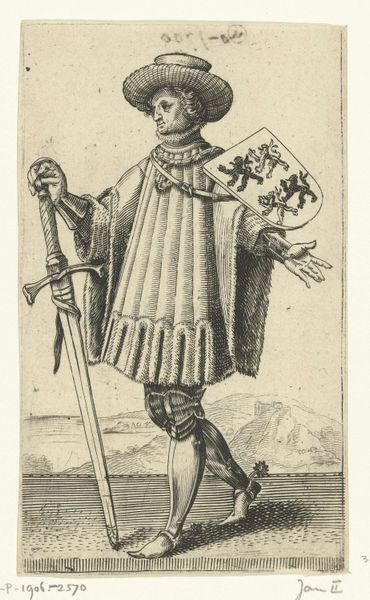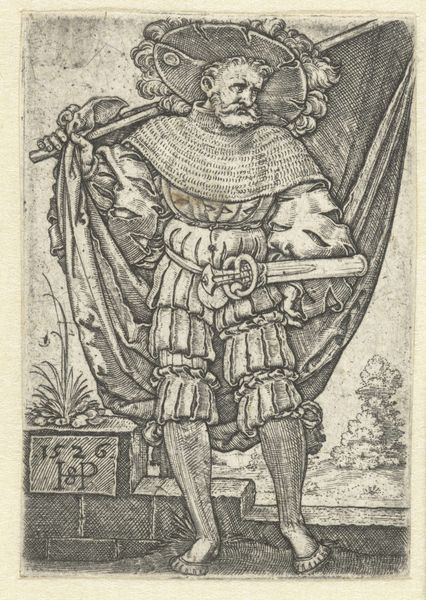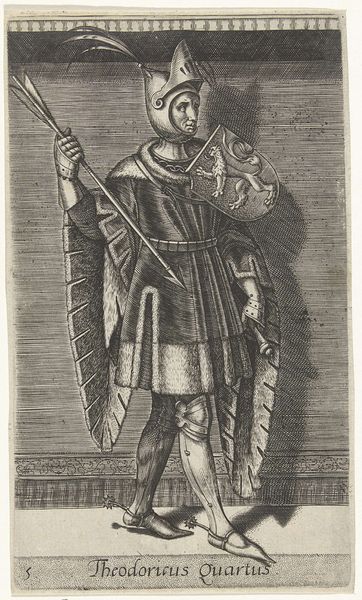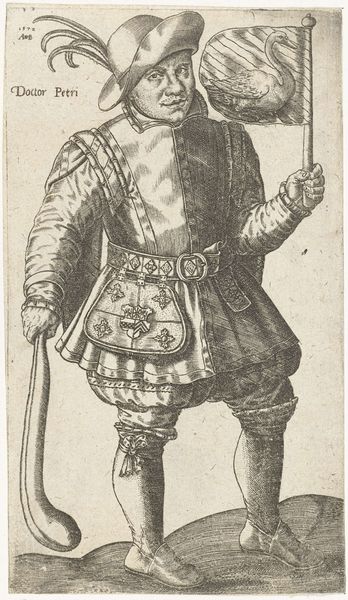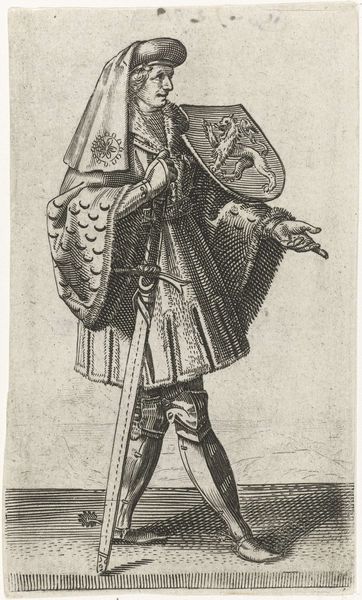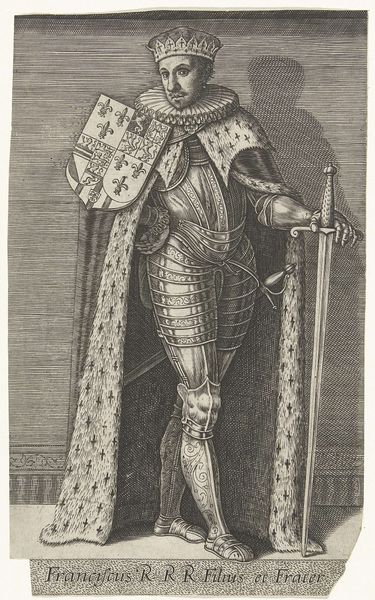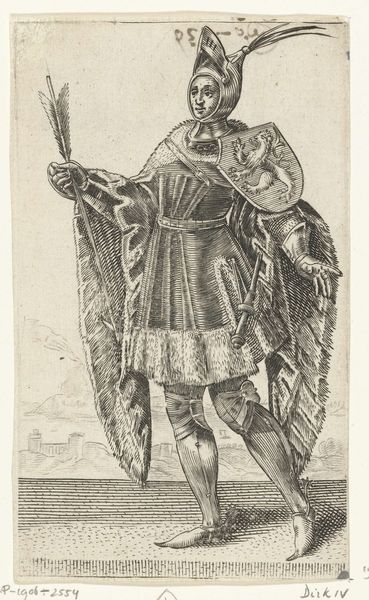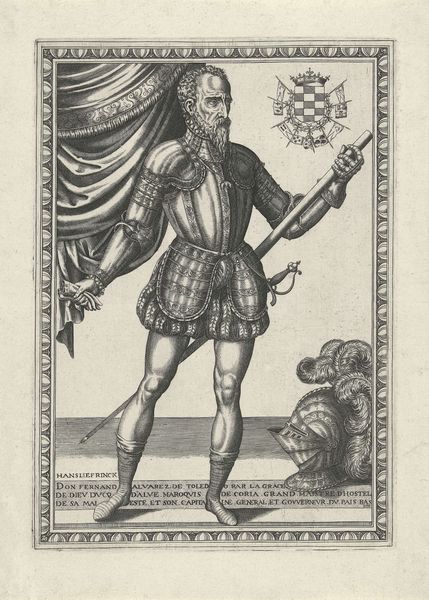
print, engraving
#
portrait
# print
#
mannerism
#
figuration
#
history-painting
#
engraving
Dimensions: height 293 mm, width 194 mm
Copyright: Rijks Museum: Open Domain
Curator: The precision of the line work is the first thing that strikes me—a testament to the engraver's skill. Editor: Absolutely. The crosshatching used to build up tone gives it a dramatic feel, but also creates a sense of rigid formality fitting for a leader. We are viewing a print portraying Emanuel Philibert, Duke of Savoy, which was made sometime between 1546 and 1562. It is currently held here at the Rijksmuseum. Curator: Note how the artist, Frans Huys, rendered the different textures. The sheen on the armor, contrasted with the drape of the curtain—it all draws the eye to how meticulously crafted and constructed this image is. The labor and craftsmanship are on display as much as the Duke's authority. Editor: Right, this wasn’t just about documentation or creating a flattering likeness, it was deeply entangled with questions of power and status. The full armor functions almost as a sort of constructed costume, emphasizing martial prowess while simultaneously symbolizing societal hierarchy, access to resources, and inherent privilege. Curator: Consider, too, the process of engraving. A copper plate, meticulously worked by hand... multiples could be made of this portrait that allow it to be circulated for a broader viewing public, to disseminate ideas of status but also craft and skill, and even ideas, and culture, which are linked together as evidence of power. Editor: The presence of the Duke's coat of arms behind him only underlines that, making this an assertion of lineage, dominion, and entitlement—a very clear message about who this man is, but the purpose extends far beyond mere biography. We could investigate here about gender performativity during the era, as well as gender relations as evidenced in sartorial expression. Curator: This piece is interesting not only for the details of how it was constructed, but because as a print, we know that this specific work would have been one of a larger, identical series of the Duke. What were the distribution networks like? Who saw this image and where? What were their ideas? The material and method open questions of accessibility in a way a painting doesn't. Editor: Ultimately, an image like this reminds us that identity, power, and artistry are always interwoven. It compels us to critically assess what is being represented, as well as who and how, offering insight into our own society through critical analysis of what has been shown and valorized throughout art history. Curator: Indeed, and reflecting on the means of production encourages a deep look at the art that can make the image's deeper messages even more profound for today’s viewers.
Comments
No comments
Be the first to comment and join the conversation on the ultimate creative platform.
